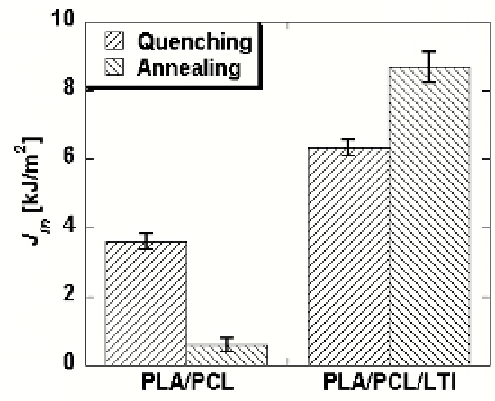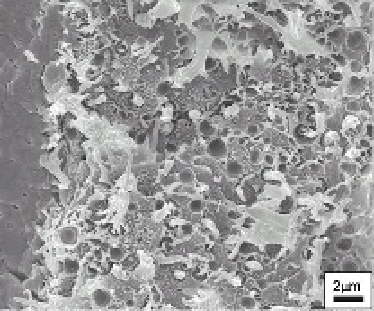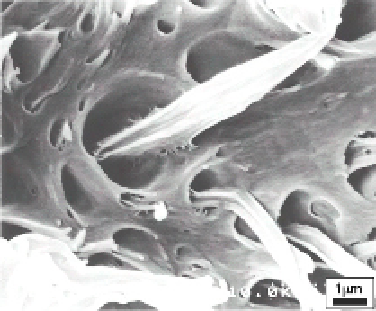Biomedical Engineering Reference
In-Depth Information
suppression of ductile deformation of the PCL spherulites. This is considered to be the
primary reason for the degradation of
J
in
as shown in Fig.21.
It is clearly seen from Figs.22(c) and (d) that in the PLA/PCL/LTI blends, cavity formation
is totally suppressed and as a result, ductile deformation is expanded due to the improved
miscibility of PLA and PCL by LTI addition. This implies that the miscibility of PLA and
PCL is improved by crosslinking of PLA and PCL macromolecules induced by the chemical
reaction between the hydroxyl group of PLA and PCL and the isocyanate group of LTI. FE-
SEM micrographs at higher magnification show that for both the quenched and annealed
PLA/PCL/LTI blends, entangled fibril structures of PLA and PCL are observed. It is thus
considered that this kind of structural transformation due to polymerization by LTI
blending results in strengthening the structure of the PLA/PCL blends. The microstructure
of PLA/PCL/LTI is thought to be further strengthened due to crystallization of PLA by
annealing, resulting in the dramatic improvement of the mode I fracture energy
J
in
as shown
in Fig.22.
Fig. 21. Effects of annealing on the critical J-integral at crack intiation,
J
in
.
(a) Quenched PLA/PCL




